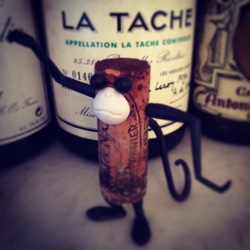10 Essential Facts on Tempranillo
Hacienda Monasterio
Crianza Ribera del Duero Tempranillo Blend 2010
What does Peter Sisseck make when he's not making $1000 bottles of Pingus? This wine. Extraordinarily complex and continuously evolving. Plum and blueberry compote, olive tapenade, stewed tomato, cocoa powder, campfire smoke, anise, and soy sauce with secondary damp earth, crushed flower petal, and cedar. The acid/tannin/sweetness balance elevates this well above its fellow Ribera del Duero Crianzas. — 8 years ago


Bodegas Muga
Gran Reserva Prado Enea Rioja Tempranillo 2006
Deeply pitched firm black fruit, with dominant secondary aromas of cedar and incense, and oiled leather on the finish. The high altitude quality of the vineyards is apparent, endowed with silky, persistent tannins and impeccable freshness. Deserves ample time in the cellar to evolve. — 10 years ago
Abacela
Estate Grown Tempranillo 2012
This wine is inky dark, and that’s no exaggeration. It actually looks like indigo ink. No light gets through at all. It’s the black hole of Tempranillo. One sniff demonstrates that darkness to my olfactory sense. There is major dark fruit, like black plums, blackberries, what’s darker than blackberries? Whatever it is, it’s in there, too. Shovel in a little dirt and light a campfire and you have the savory side figured out. The palate is fruitier than I expected, but don’t get the wrong idea. I just mean it isn’t completely given over to minerals and spices. That dark fruit is there, but it’s in a battle with the savory notes. Tannic structure is amazing - even after it’s open for three days. Bring on the red meat. This wine will not be tamed. — 10 years ago
Bodegas Numanthia
Numanthia Toro Tempranillo 2012
Rich and structured. Great balance, velvet tannins still have some grip, black cherry, wet soil, charcoal flavors aromas. Alcohol nicely integrated, great wine for stews, grilled meats. Had the 2012 in 2017, nice now but can age many more years as well. — 9 years ago
Viñedos del Contino (CVNE)
Gran Reserva Rioja Tempranillo Blend 2007
The nose here shows more sweet tabacco, worn leather and sweet red fruit along with young chorizo, a deep pool of richly spiced black fruit but with a freshness to it. Super drinkable and very light on its feet, beautifully sweet tannins that ride the finish and gain in intensity pushing through vibrant blackberry and cherry fruit. Wonderful stuff
— 10 years ago










Jeff Loo
Tasted blind, it was absolutely stunning and screamed Burgundy. Been saying it for years. Old Rioja, don’t tell anyone! — 8 years ago